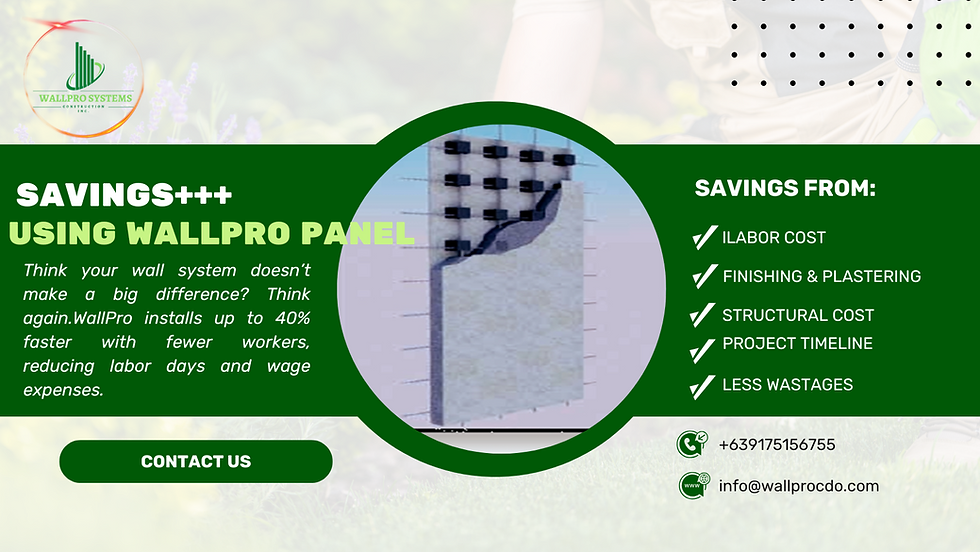Estimated Cost and Stages for a Home Repainting Project
- Gabriel Mikael
- Dec 29, 2024
- 4 min read
Estimated Cost and Stages for a Home Repainting Project
Repainting your home is one of the most cost-effective ways to refresh its appearance and increase its value. Whether you're updating the exterior, refreshing the interior, or both, a home repainting project can breathe new life into your living space. However, understanding the cost breakdown and the various stages involved is essential to planning your budget and ensuring a smooth project. This article will walk you through the estimated costs and the key stages of a home repainting project.
1. Initial Cost Considerations
Several factors impact the total cost of repainting a home. These include:
Size of the house (square footage)
Type of paint and finish used
Surface preparation needed (e.g., scraping, sanding, priming)
Labor costs (which can vary depending on location and the contractor)
Number of coats applied
Additional repairs (e.g., patching holes, replacing damaged siding)
In general, the cost of a repainting project is measured per square foot, with labor and materials typically making up the majority of expenses.
2. Estimated Costs for a Home Repainting Project
Here’s a general breakdown of costs based on a typical 1,500-2,000 square foot home:
Stage | Estimated Cost (USD) |
Surface Preparation | $300 - $1,000 |
Primer Application | $200 - $800 |
Paint and Materials | $300 - $2,000 (depending on quality/brand) |
Labor Costs | $1,500 - $4,000 (depending on area/complexity) |
Total Estimated Cost | $2,300 - $7,800 |
Note: These are estimates and can vary based on location, the contractor hired, and the specific needs of your project.
3. Key Stages of a Home Repainting Project
Stage 1: Inspection and Consultation
Before starting the project, it’s important to consult with a professional painter or contractor. They will inspect your home, assess the condition of the surfaces, and offer recommendations on paint types, colors, and finishes.
Cost: Usually free or a nominal fee for consultation.
Duration: 1-2 days.
Stage 2: Surface Preparation
Proper preparation is key to ensuring that the paint adheres well and lasts longer. This stage involves cleaning, sanding, scraping, and repairing any surface damage.
Cleaning and Scraping: Dirt, mold, and old peeling paint are removed to create a clean surface. Pressure washing may be used for exterior walls.
Repairs: Holes, cracks, or damaged areas are patched.
Priming: Applying a primer helps the paint adhere better and ensures even coverage.
Cost: $300 - $1,000 depending on the extent of repairs and prep work. Duration: 1-3 days, depending on the surface condition.
Stage 3: Choosing and Purchasing Paint
The cost of paint depends on the type and brand chosen. High-quality paints can cost more upfront but often result in a longer-lasting finish. You'll also need to choose between finishes like matte, semi-gloss, or satin, which affect both appearance and durability.
Interior Paint Costs: $15 - $50 per gallon for high-quality brands.
Exterior Paint Costs: $25 - $60 per gallon for weather-resistant, high-quality paint.
Specialty Paints (for areas like kitchens, bathrooms, or mold-prone areas): $30 - $70 per gallon.
Cost: $300 - $2,000 depending on paint type and coverage required. Duration: 1-2 days for shopping and delivery.
Stage 4: Priming
A primer coat is essential for certain surfaces, especially if you're painting over darker colors or if the surface has never been painted before. Priming ensures a smooth and even finish, allowing the final coats of paint to adhere better.
Cost: $200 - $800 depending on surface area and primer quality.
Duration: 1-2 days.
Stage 5: Painting
This is the stage where the magic happens! Depending on the size of your home and the number of coats required, this process can take a few days to a week or more. Two coats of paint are typically recommended to achieve a smooth, uniform look.
Interior Repainting: Usually quicker and less weather-dependent. Walls, ceilings, and trim are the primary areas to be covered.
Exterior Repainting: Requires consideration of weather and may involve more complex equipment, such as ladders or scaffolding.
Cost: $1,500 - $4,000 depending on the size of the house, labor costs, and number of coats. Duration: 2-7 days depending on the scope of the work.
Stage 6: Finishing Touches and Cleanup
Once the painting is complete, touch-ups are made, and any remaining areas are addressed. Afterward, the site is cleaned up, removing any tarps, painter’s tape, and other materials.
Cost: Typically included in the overall labor cost.
Duration: 1-2 days.
4. Additional Factors Affecting Cost
Exterior vs. Interior Painting
Exterior painting typically costs more due to the additional prep work required (e.g., power washing, repairs to the siding) and the need for specialized, weather-resistant paint.
Interior painting is generally less expensive but can still vary greatly based on room size, wall texture, and the type of paint.
Number of Coats
The number of paint coats significantly impacts the overall cost. While a single coat might save money, two coats are recommended for better durability and a more vibrant, even finish.
Geographic Location
Labor costs can vary based on your location. For instance, painting services in large urban areas tend to cost more than in rural or less populated areas.
Surface Condition
Homes with damaged walls, mold, or heavy peeling paint will require more preparation work, increasing the total cost.
5. Saving Money on Your Home Repainting Project
Do-It-Yourself (DIY) for Smaller Areas: If you have the time and skill, consider handling smaller areas, such as a bedroom or a bathroom, yourself to save on labor costs.
Buy Paint in Bulk: If you’re repainting multiple rooms, buying paint in larger quantities can reduce costs.
Request Multiple Quotes: Get quotes from several contractors to find competitive pricing. Ensure that the quotes include a detailed breakdown of materials and labor costs.
Off-Season Discounts: Consider scheduling your repainting project during off-peak seasons, when contractors are more likely to offer discounts.
Repainting your home is a great investment that not only improves its aesthetic appeal but can also protect it from wear and tear. By understanding the costs associated with each stage of the project and what factors can affect the price, you can better plan and budget for a successful repainting job.




Comments